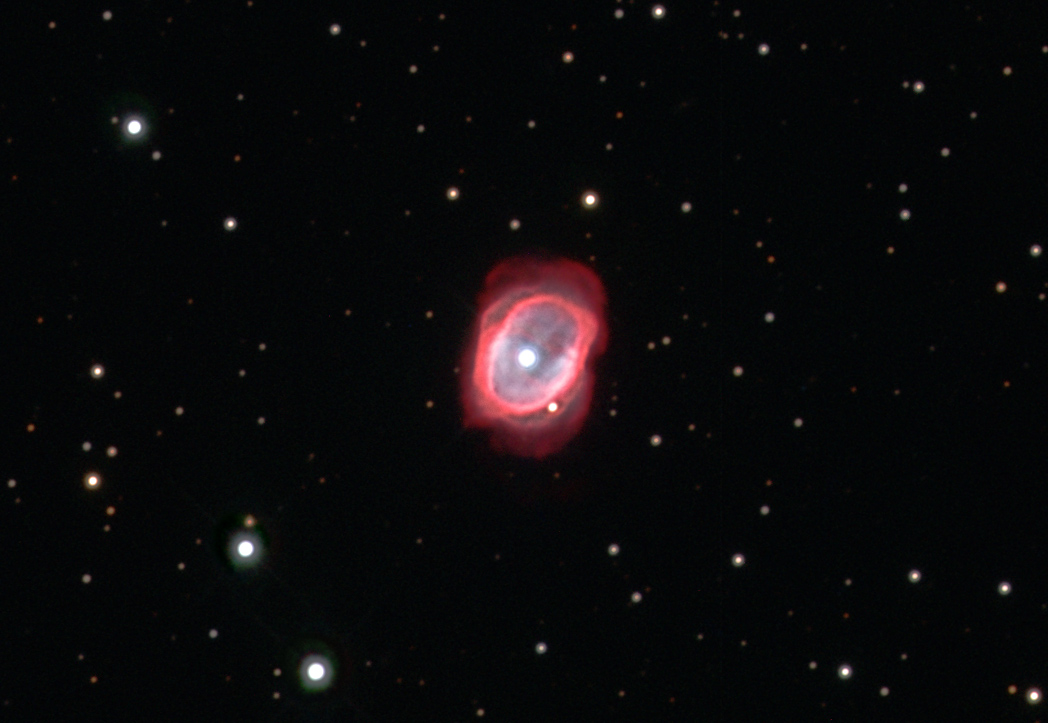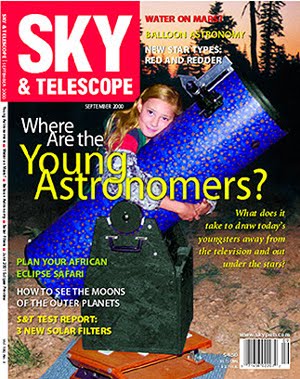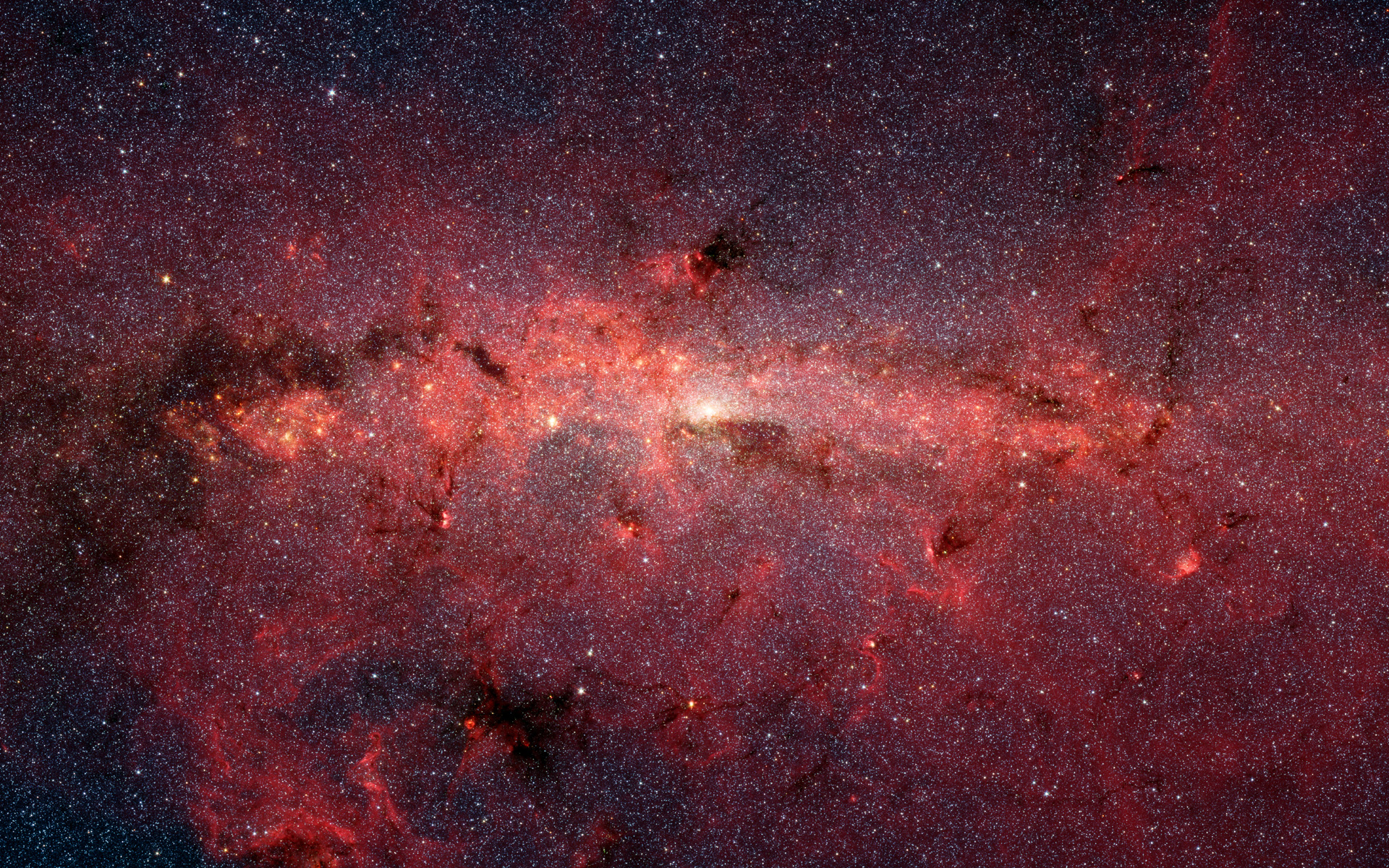A short report from DARC Observatory last night. DARC is a private property, southeast of the
 San Francisco bay area, located near Mercy Hot Springs in Little Panoche Valley. It is dark, remote and desolate.
San Francisco bay area, located near Mercy Hot Springs in Little Panoche Valley. It is dark, remote and desolate.Below are objects I observed (and tried to observe) with my 18" f/4.5 Dobsonian. All eyepieces are type II Naglers. Conditions at DARC could not have been better. Temperatures must have been in the high 80's at 7pm when I arrived. During the night, there was no more than the slightest breeze - enough to just help cool us down, as we could have been in t-shirts all night long.
I began by observing NGC 2903, and Ariana Bernal Adreo came over asking to see something in my telescope. She suggested Venus, but being the Klieg Light that it is, I suggested something less jarring. So, we went on a little tour. I began with Saturn, which was nice, but a bit soft. Then I progressed out to M3, explaining to Ariana that it was still part of our galaxy. She liked the globular. Wondering what to show her next, I asked my observing buddy
 Richard Navarrete for
suggestions. The Whirlpool! Well placed, it showed great detail.
Ariana easily understood that she was seeing spiral arms. I suppose
some knowledge has rubbed off from her dad. So, after two galaxies,
what else? Richard? Ah - the Leo Triplet! In my 20 Nagler, they sat
around the edge of the field. But Ariana was able to pick them out.
Three galaxies are certainly better than two! Ten years old, and
observing through a big scope - this sounds so familiar to me! From
there, I moved to M84 and M86, the heart of the Virgo Cluster - and
asked Ariana to count the galaxies in view - well - four. Four galaxies
in a single view! Astronishing! So, I told Ariana about Markarian's
Chain, and suggested she tell her dad what she'd seen. Later, Rogelio
came by, and told me these were the first objects his daughter has seen
in telescope, that are outside our galaxy.
Richard Navarrete for
suggestions. The Whirlpool! Well placed, it showed great detail.
Ariana easily understood that she was seeing spiral arms. I suppose
some knowledge has rubbed off from her dad. So, after two galaxies,
what else? Richard? Ah - the Leo Triplet! In my 20 Nagler, they sat
around the edge of the field. But Ariana was able to pick them out.
Three galaxies are certainly better than two! Ten years old, and
observing through a big scope - this sounds so familiar to me! From
there, I moved to M84 and M86, the heart of the Virgo Cluster - and
asked Ariana to count the galaxies in view - well - four. Four galaxies
in a single view! Astronishing! So, I told Ariana about Markarian's
Chain, and suggested she tell her dad what she'd seen. Later, Rogelio
came by, and told me these were the first objects his daughter has seen
in telescope, that are outside our galaxy.I was soon back on my program. In order to just take it easy, I had copied the Spring Favorites from the Adventures In Deep Space web-page: http://www.astronomy-mall.com/Adventures.In.Deep.Space/spring.htm
I took my time, relaxed, and thoroughly enjoyed myself. I think the most interesting "find" for me was the Eight Burst Nebula - it is so far south, I knew none of the star patterns, and there was enough extinction down low that I found myself guessing at where it might be. After a lot of looking, and scratching my head, I pointed the scope at the horizon, and .... surprise!.... there it was. I had to hold the front of the scope down in order to see it. Also very rewarding were the two galaxy clusters, NGC 3158 and 3166. I hit my mag limit for the night on MCG+7-21-7, which was at the extreme limit of visibility.
 In the morning, I woke, and while packing up, lifted my equatorial
platform, and found, nicely coiled like The Whirlpool Galaxy, a baby
rattlesnake - who was sleeping in the shade of my gear, on this already
hot April morning. I didn't need a cup of coffee, after that....
In the morning, I woke, and while packing up, lifted my equatorial
platform, and found, nicely coiled like The Whirlpool Galaxy, a baby
rattlesnake - who was sleeping in the shade of my gear, on this already
hot April morning. I didn't need a cup of coffee, after that....Thanks to Rogelio Bernal Andreo and Lee Hoglan for hosting our group. It was an excellent outing, start to finish - a wonderful two hour drive from the Santa Cruz area, out of the domain of man, and I was seeing things, in the dark, through a telescope (made of glass and wood) - half a billion light years away, What perspective.
NGC NAME TYPE CON RA DEC VMAG URA2
 NGC 2903 na G LEO 932 2130 8.9
NGC 2903 na G LEO 932 2130 8.9 12mm - bright and elongated 3x2 with strong central condensation across most of the major axis. Very strong small elongated core that appears round with ansae. Condensation in arms shows well (NGC 2905).
7mm - 4 members are obvious, 5th does not show up. Three brightest all have pinpoint bright stellar nuclei, dimmest member does not. All members are elongated and at divergent angles to each other.
Double Quasar QSO UMA 1001 5541 16.5
Negative observation.
NGC 3115 Spindle G SEX 1005 -743 8.9
12mm - very bright extremely compact core. Arms are very thin and very long. Stellar nucleus is noticeable inside small but elongated core. Arms ratio fo at least 10x1, and bright. Highlight object.
NGC 3132 8-Burst PN VEL 1007 -4026 9.2
7mm - large and bright nebula with bright cental star. Slightly elongated, with a large number of "stars embedded.
NGC 3158 GAL GR LMI 013 3846 11.8
7mm - 11 galaxies in close proximity in view - most challenging MCG+7-21-25 and MCG +7-21-27 both on edge of perception. NGC 3163, 3161, 3159 form a nice compact chain with MCG+7-21-19 at the W end. Off further west were NGCs 3151 and 3150. N was NGC 3158 - the most obvious and largest in the group, with NGCs 3160 and 3152 to its north. Very nice compact group of galaxies.
NGC 3166 G SEX 1014 326 10.4
7mm - NGC 3169 appears disrupted with a bright core that is elongated mostly e/w, and a quickly and randomly diffusing halo. NGC 3166 lies 15' to its w and has a compact non-stellar core elongated slightly e/w, with a diffuse halo slightly elongated in the same direction. 8' to the west of 3166 and past two dim stars is a non-descript faint glow barely visible, without distinct elongation or direction. Continuing approximately 30' SW is NGC 3156, a moderately bright galaxy with indistinct shape, a brighter compact large core and a feeling of a disrupted portion extending south.
Hickson 44 GAL GR LEO 1018 2150 11
20mm - beautiful grouping of four obvious galaxies - three in a line, forth close by to the nw of the middle member of the linear group.

















No comments:
Post a Comment